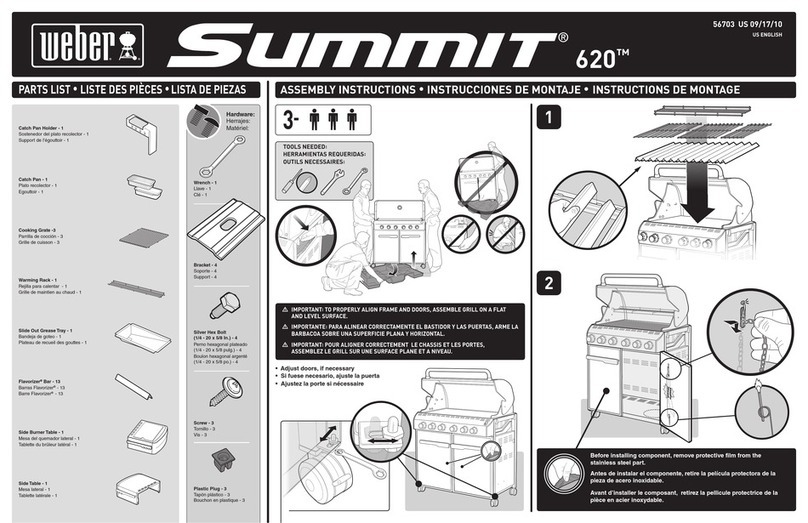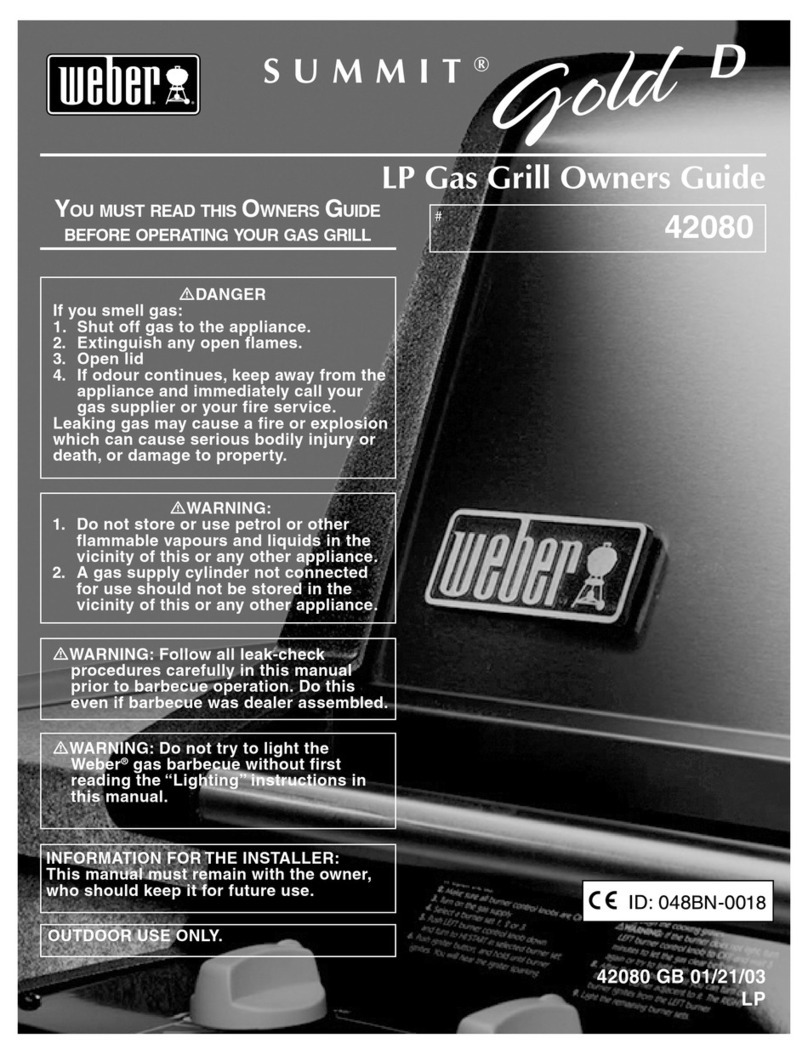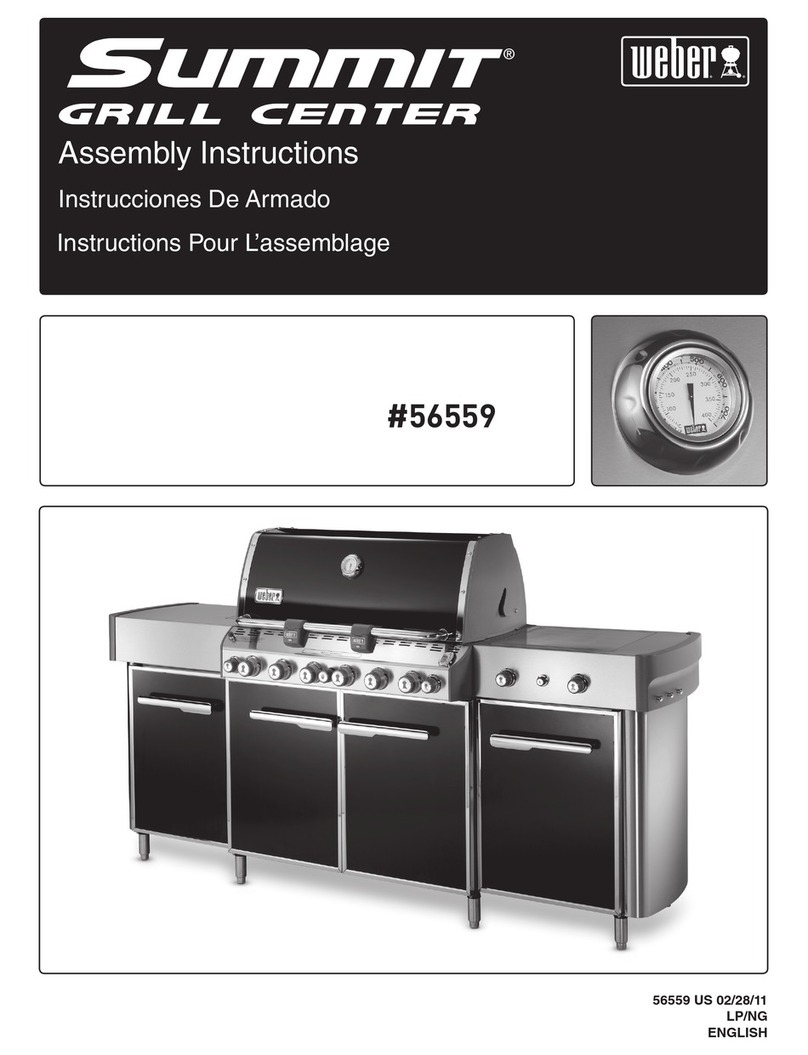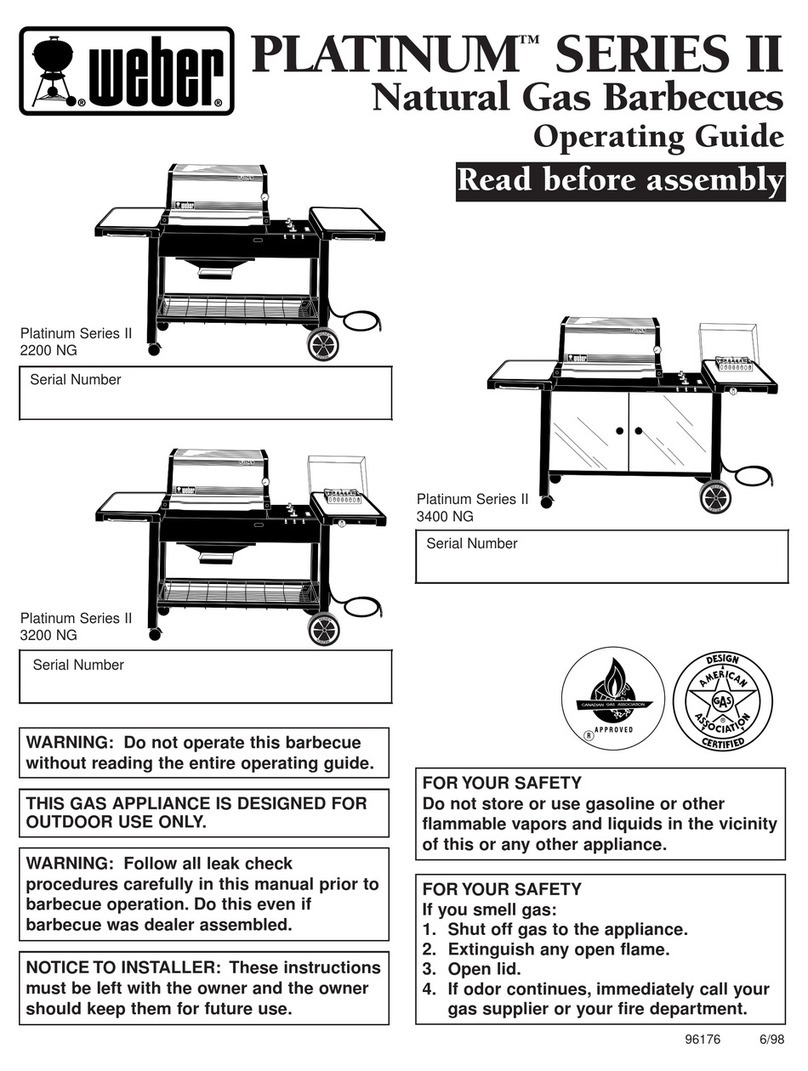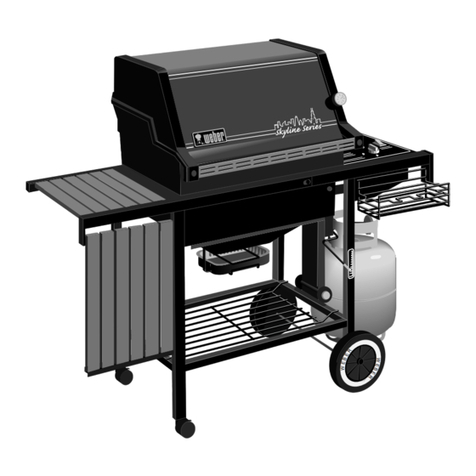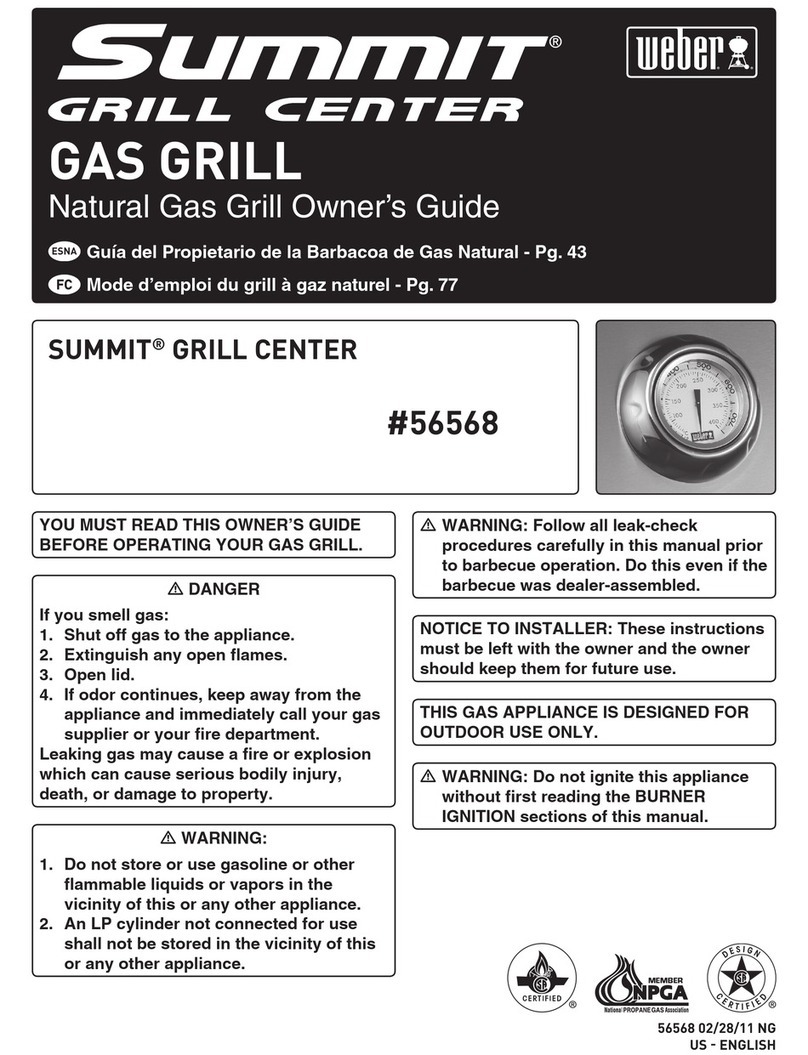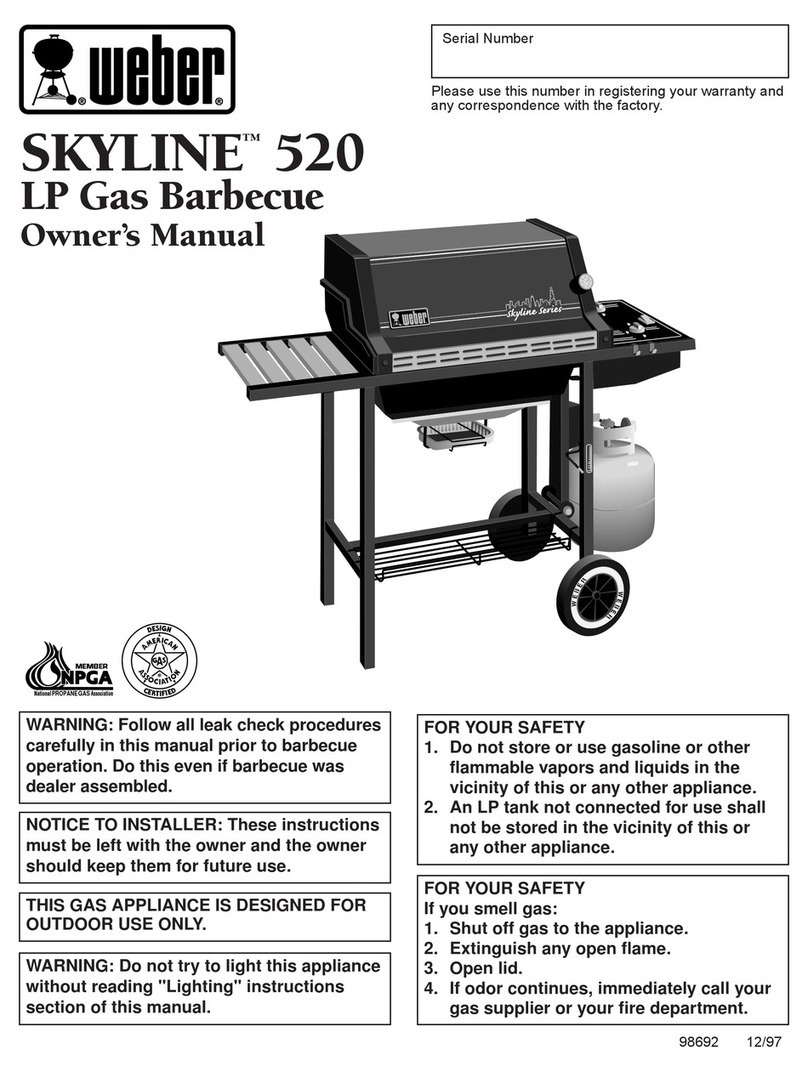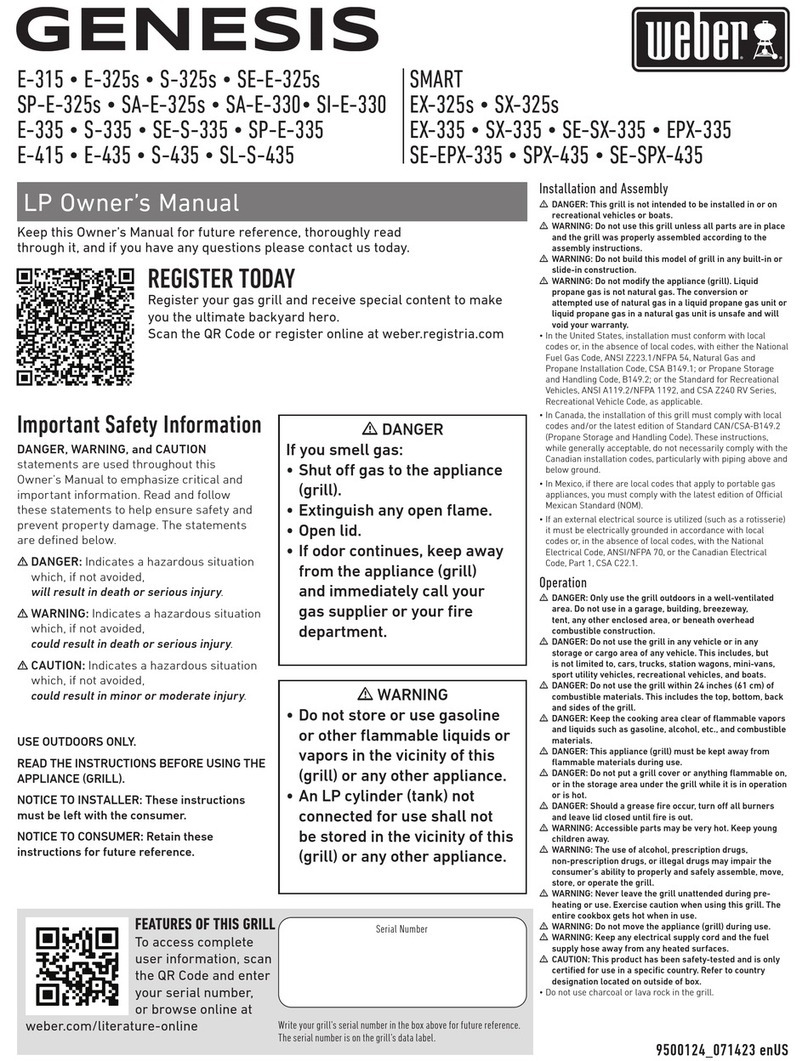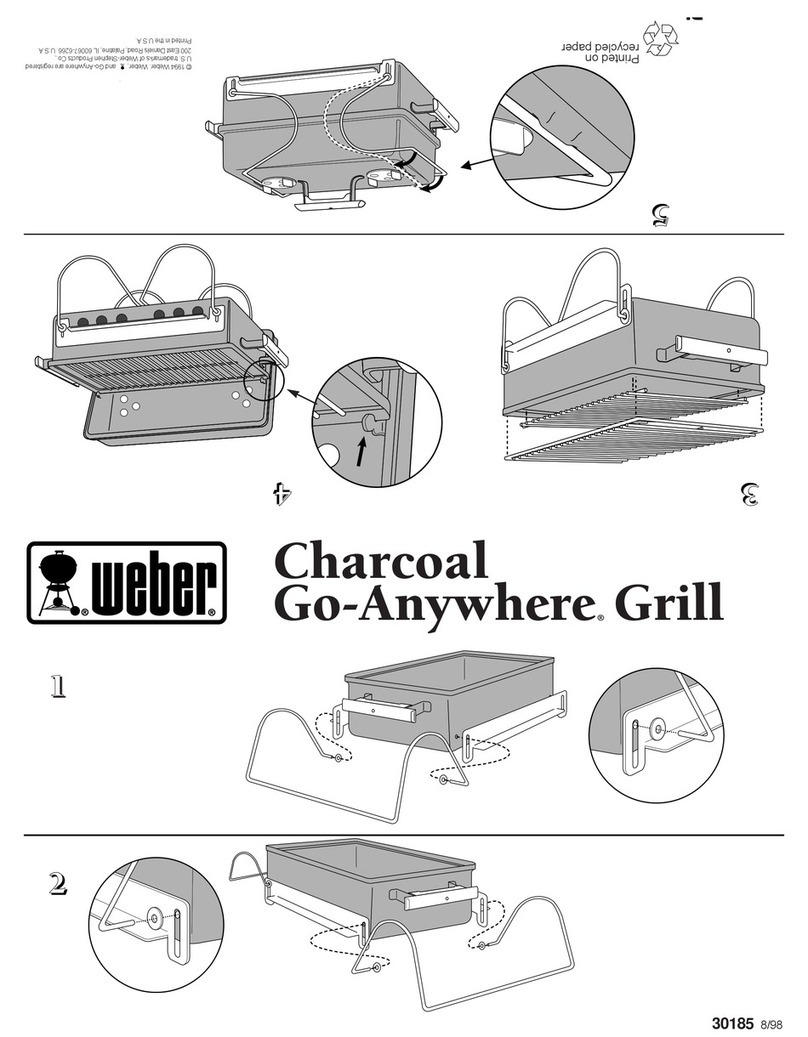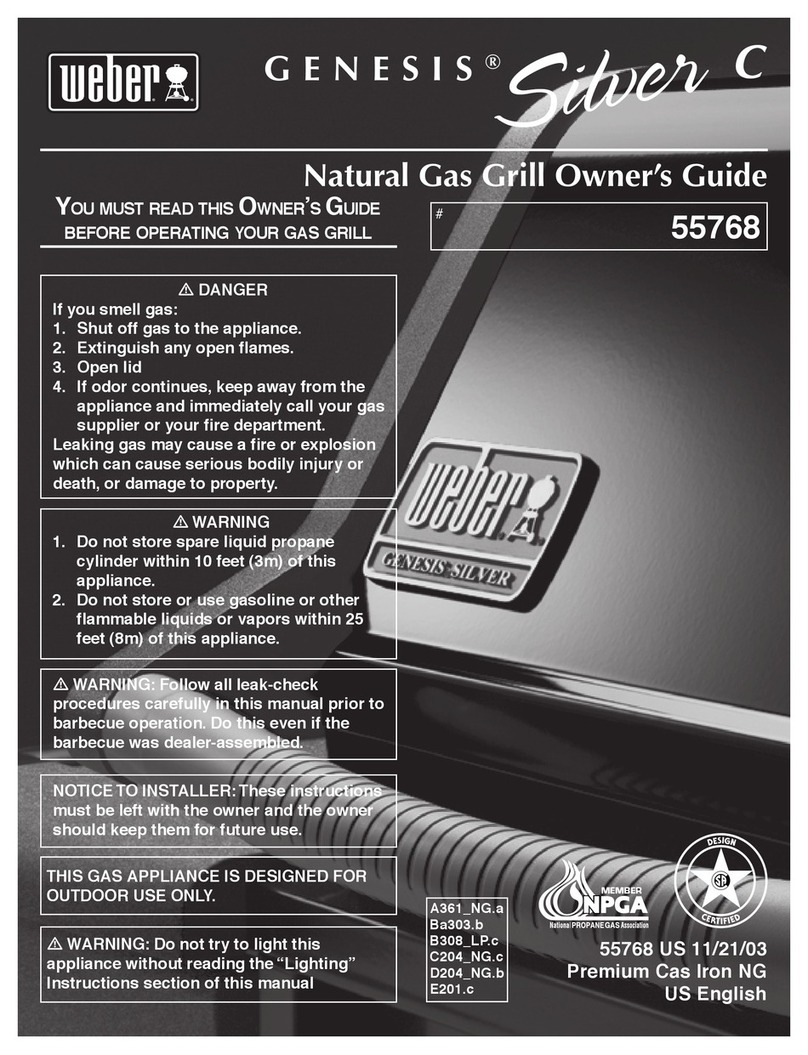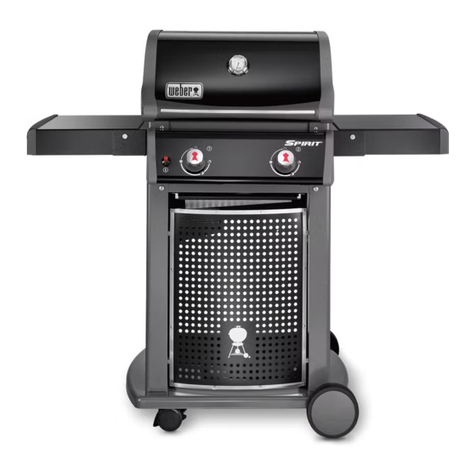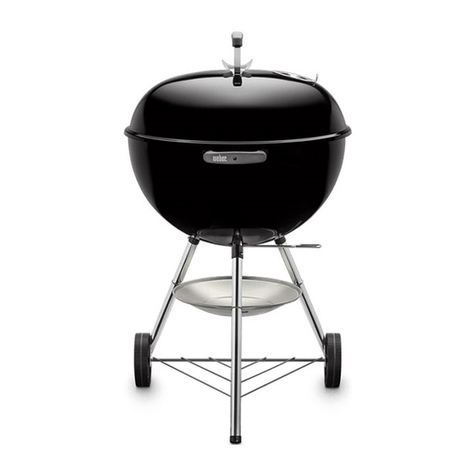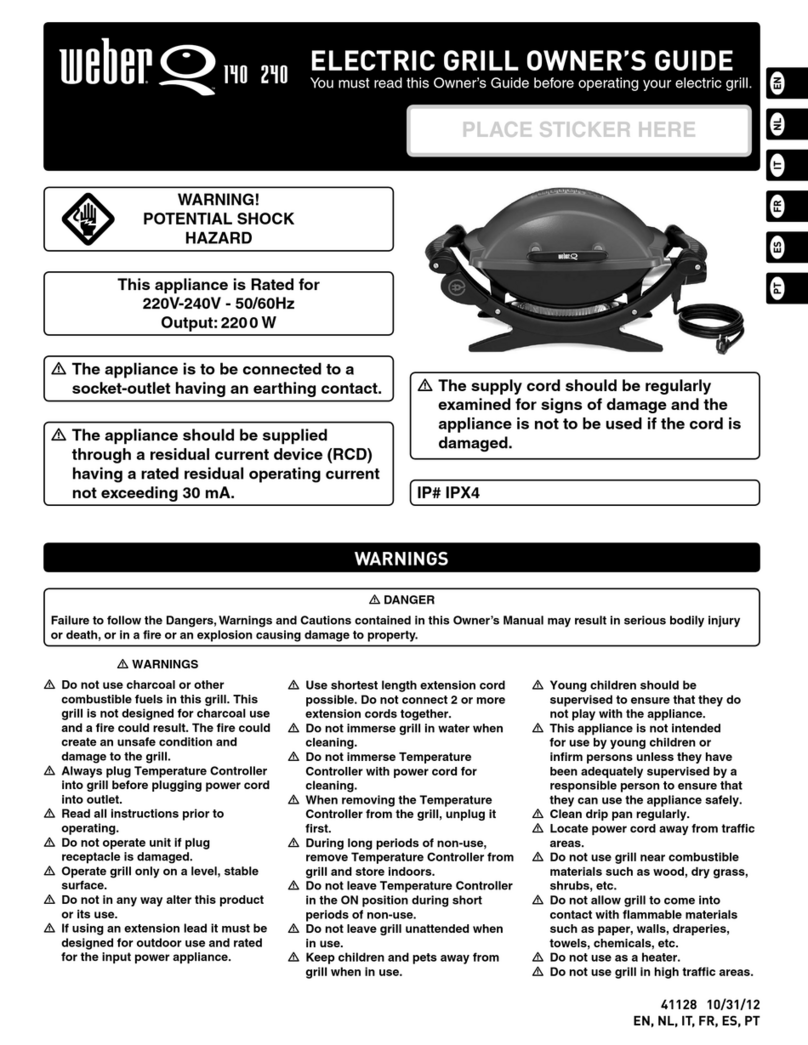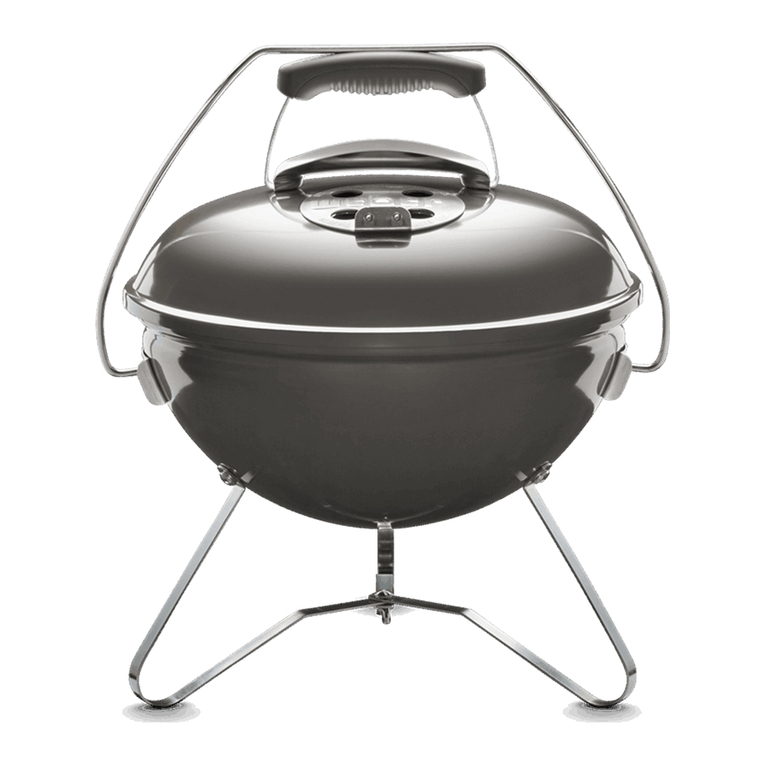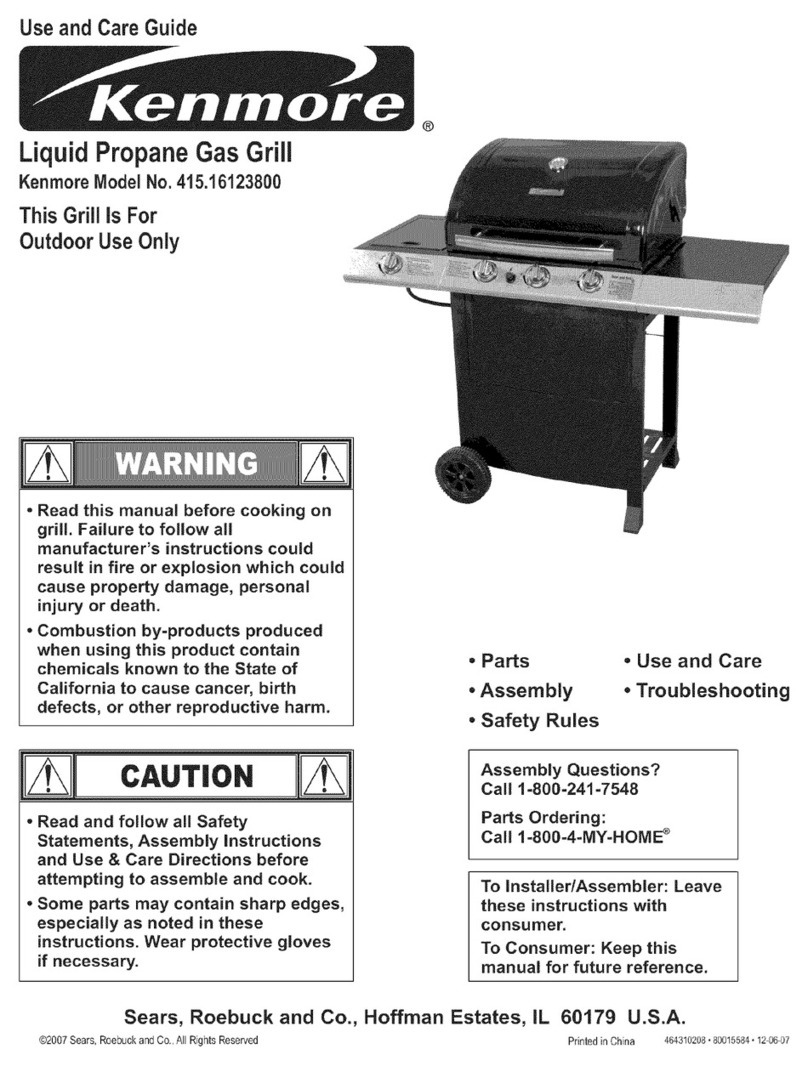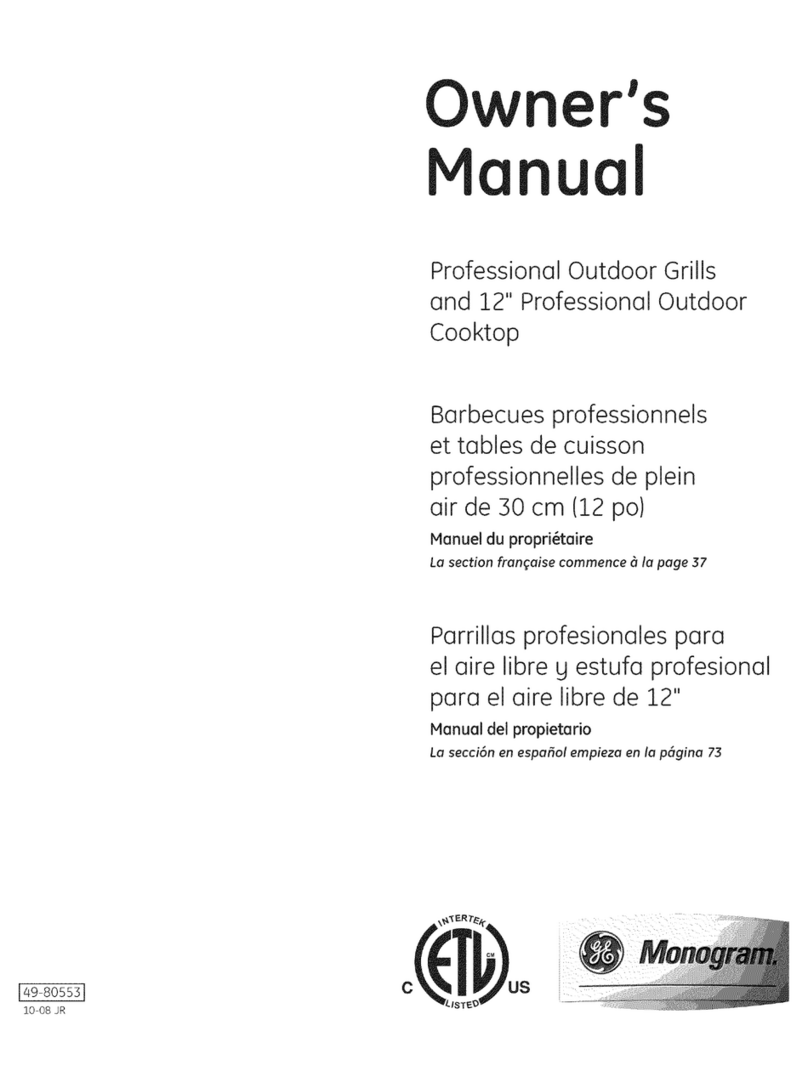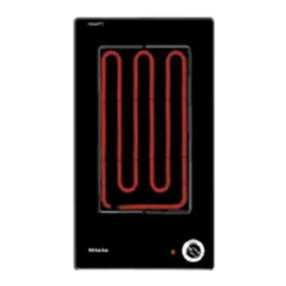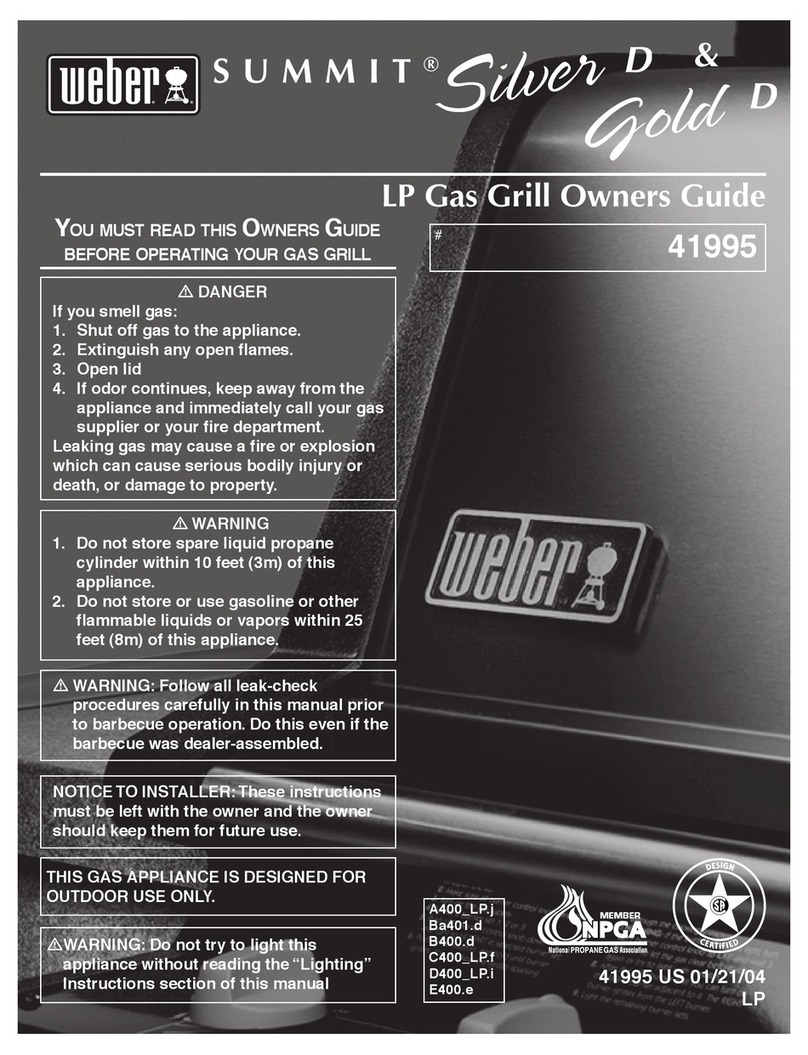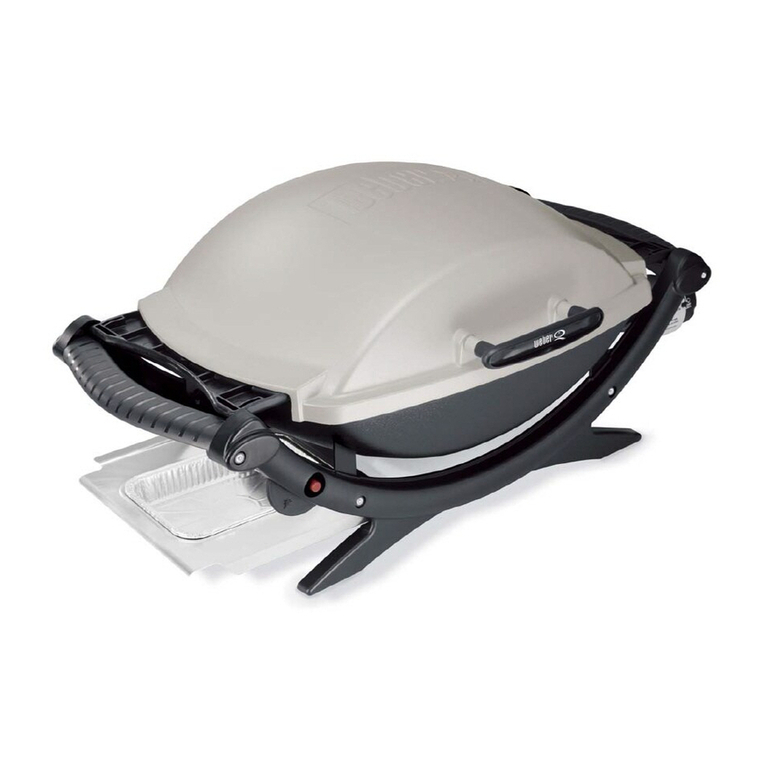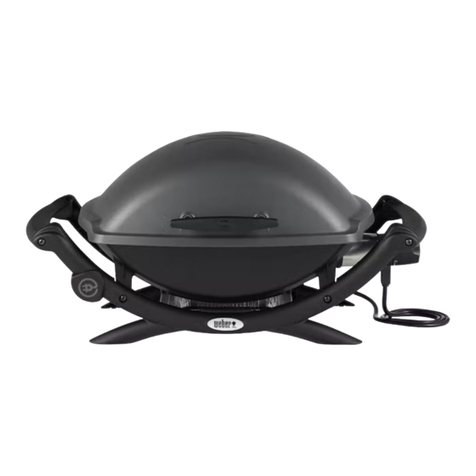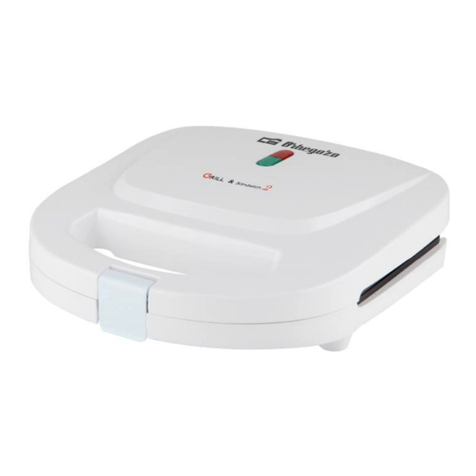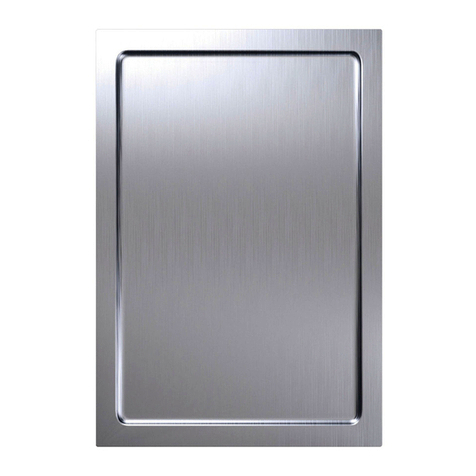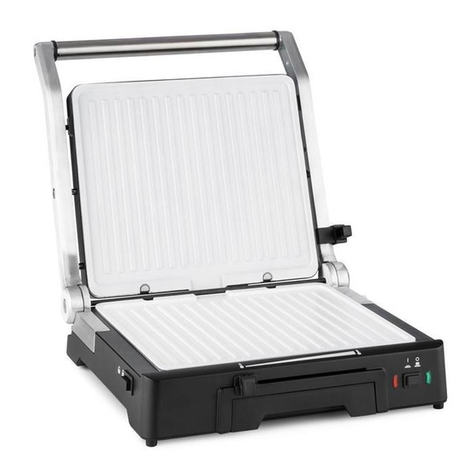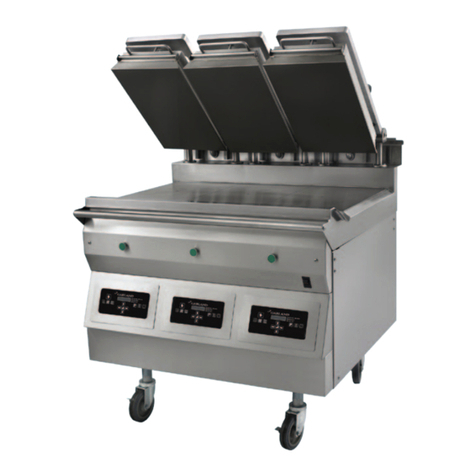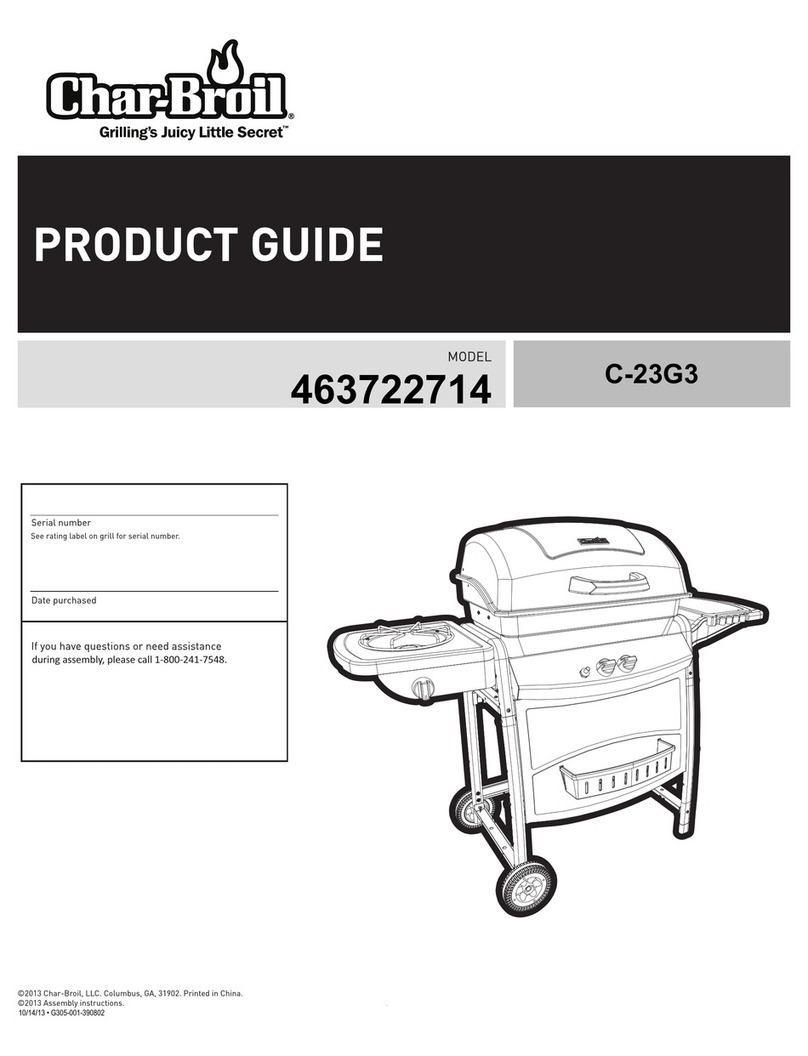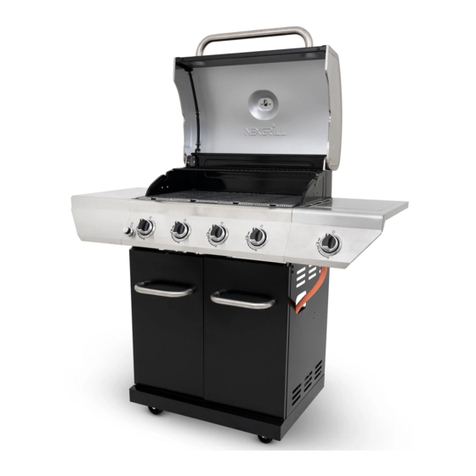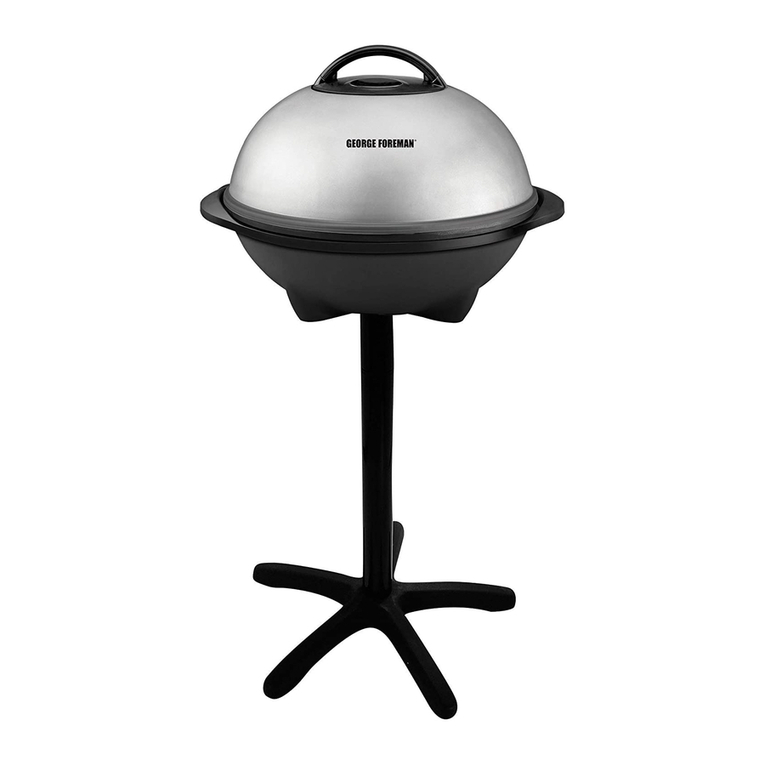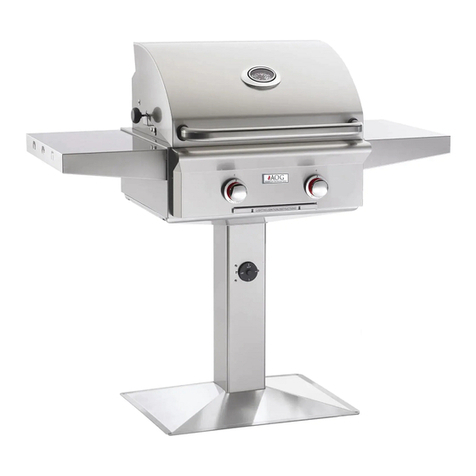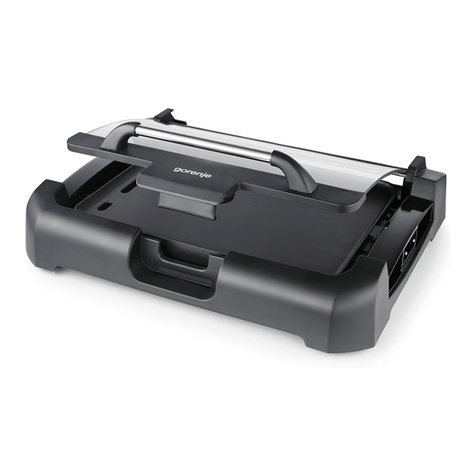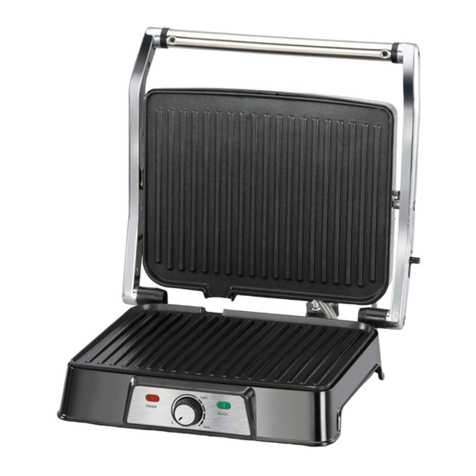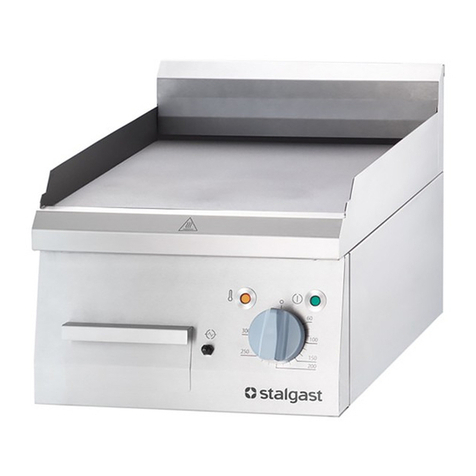
4
The WEBER Promise
PROTECT YOUR
INVESTMENT
Shield your barbecue from the elements
with a heavy-duty premium barbecue
cover.
Thank you for purchasing a WEBER product. Weber-Stephen
Products LLC, 1415 S. Roselle Road, Palatine, Illinois 60067
(“WEBER”) prides itself on delivering a safe, durable, and reliable
product.
This is WEBER’s Voluntary Warranty provided to you at no extra
charge. It contains the information you will need to have your
WEBER product repaired in the unlikely event of a failure or
defect.
Pursuant to applicable laws, the customer has several
rights in case the product is defective. Those rights include
supplementary performance or replacement, abatement of the
purchasing price, and compensation. In the European Union, for
example, this would be a two-year statutory warranty starting
on the date of the handover of the product. These and other
statutory rights remain unaected by this warranty provision. In
fact, this warranty grants additional rights to the Owner that are
independent from statutory warranty provisions.
WEBER’S VOLUNTARY WARRANTY
WEBER warrants, to the purchaser of the WEBER product (or in
the case of a gift or promotional situation, the person for whom
it was purchased as a gift or promotional item), that the WEBER
product is free from defects in material and workmanship for the
period(s) of time specified below when assembled and operated
in accordance with the accompanying Owner’s Manual. (Note: If
you lose or misplace your WEBER Owner’s Manual, a replacement
is available online at www.weber.com, or such country-specific
website to which Owner may be redirected.) Under normal,
private single family home or flat use and maintenance, Weber
agrees within the framework of this warranty to repair or replace
defective parts within the applicable time periods, limitations
and exclusions listed below. TO THE EXTENT ALLOWABLE BY
APPLICABLE LAW, THIS WARRANTY IS EXTENDED ONLY TO
THE ORIGINAL PURCHASER AND IS NOT TRANSFERABLE TO
SUBSEQUENT OWNERS, EXCEPT IN THE CASE OF GIFTS AND
PROMOTIONAL ITEMS AS NOTED ABOVE.
Our goods come with guarantees that cannot be excluded
under the Australian Consumer Law. You are entitled to a
replacement or refund for a major failure and for compensation
for any other reasonably foreseeable loss or damage. You
are also entitled to have the goods repaired or replaced if the
goods fail to be of acceptable quality and the failure does not
amount to a major failure.
The benefits given under this Limited Warranty are in addition
to other rights and remedies you have under the Australian
Consumer Law in relation to this WEBER gas barbecue.
OWNER’S RESPONSIBILITIES UNDER THIS WARRANTY
To ensure trouble-free warranty coverage, it is important (but it
is not required) that you register your Weber product online at
www.weber.com or such country-specific website to which you
may be redirected. Please also retain your original sales receipt
and/or invoice. Registering your WEBER product confirms your
warranty coverage and provides a direct link between you and
WEBER in case we need to contact you.
The above warranty only applies if the Owner takes reasonable
care of the WEBER product by following all assembly
instructions, usage instructions, and preventative maintenance
as outlined in the accompanying Owner’s Manual, unless the
Owner can prove that the defect or failure is independent of
non-compliance with the above-mentioned obligations. If you
live in a coastal area, or have your product located near a
pool, maintenance includes regular washing and rinsing of the
exterior surfaces as outlined in the accompanying Owner’s
Manual.
WARRANTY HANDLING / EXCLUSION OF WARRANTY
If you believe that you have a part which is covered by this
Warranty, please contact WEBER Customer Service using the
contact information on our website (www.weber.com, or such
country-specific website to which Owner may be redirected).
WEBER will, upon investigation, repair or replace (at its option) a
defective part that is covered by this Warranty. In the event that
repair or replacement are not possible, Weber may choose (at its
option) to replace the barbecue in question with a new barbecue
of equal or greater value. WEBER may ask you to return parts for
inspection, shipping charges to be pre-paid.
This WARRANTY lapses if there are damages, deteriorations,
discolourations, and/or rust for which WEBER is not responsible
caused by:
• Abuse, misuse, alteration, modification, misapplication,
vandalism, neglect, improper assembly or installation, and
failure to properly perform normal and routine maintenance;
• Insects (such as spiders) and rodents (such as squirrels),
including but not limited to damage to burner tubes and/or gas
hoses;
• Exposure to salt air and/or chlorine sources such as swimming
pools and hot tubs/spas;
• Severe weather conditions such as hail, hurricanes,
earthquakes, tsunamis or surges, tornadoes or severe storms.
The use and/or installation of parts on your WEBER product that
are not genuine WEBER parts will void this Warranty, and any
damages that result hereby are not covered by this Warranty.
Any conversion of a gas barbecue not authorised by WEBER and
not performed by a WEBER authorised service technician will
void this Warranty.
PRODUCT WARRANTY PERIODS
Cookbox:
10 years, no rust through/burn through
(2 years paint excluding fading or discolouration)
Lid assembly:
10 years, no rust through/burn through
(2 years paint excluding fading or discolouration)
Stainless steel burner tubes:
10 years, no rust through/burn through
Stainless steel cooking grills:
5 years, no rust through/burn through
Stainless steel FLAVORIZER BARS:
5 years, no rust through/burn through
Porcelain-enamelled cast iron cooking grills:
5 years, no rust through/burn through
WEBER CONNECT Components:
3 years
All remaining parts:
2 years
DISCLAIMERS
APART FROM THE WARRANTY AND DISCLAIMERS AS DESCRIBED
IN THIS WARRANTY STATEMENT, THERE ARE EXPLICITLY NO
FURTHER WARRANTY OR VOLUNTARY DECLARATIONS OF
LIABILITY GIVEN HERE WHICH GO BEYOND THE STATUTORY
LIABILITY APPLYING TO WEBER. THE PRESENT WARRANTY
STATEMENT ALSO DOES NOT LIMIT OR EXCLUDE SITUATIONS
OR CLAIMS WHERE WEBER HAS MANDATORY LIABILITY AS
PRESCRIBED BY STATUTE.
NO WARRANTIES SHALL APPLY AFTER THE APPLICABLE
PERIODS OF THIS WARRANTY. NO OTHER WARRANTIES
GIVEN BY ANY PERSON, INCLUDING A DEALER OR RETAILER,
WITH RESPECT TO ANY PRODUCT (SUCH AS ANY “EXTENDED
WARRANTIES”), SHALL BIND WEBER. THE EXCLUSIVE REMEDY
OF THIS WARRANTY IS REPAIR OR REPLACEMENT OF THE PART
OR PRODUCT.
IN NO EVENT UNDER THIS VOLUNTARY WARRANTY SHALL
RECOVERY OF ANY KIND BE GREATER THAN THE AMOUNT OF
THE PURCHASE PRICE OF THE WEBER PRODUCT SOLD.
YOU ASSUME THE RISK AND LIABILITY FOR LOSS, DAMAGE,
OR INJURY TO YOU AND YOUR PROPERTY AND/OR TO OTHERS
AND THEIR PROPERTY ARISING OUT OF THE MISUSE OR ABUSE
OF THE PRODUCT OR FAILURE TO FOLLOW INSTRUCTIONS
PROVIDED BY WEBER IN THE ACCOMPANYING OWNER’S
MANUAL.
PARTS AND ACCESSORIES REPLACED UNDER THIS WARRANTY
ARE WARRANTED ONLY FOR THE BALANCE OF THE ABOVE
MENTIONED ORIGINAL WARRANTY PERIOD(S).
THIS WARRANTY APPLIES TO PRIVATE SINGLE FAMILY HOME OR
FLAT USE ONLY AND DOES NOT APPLY TO WEBER BARBECUES
USED IN COMMERCIAL, COMMUNAL OR MULTI-UNIT SETTINGS
SUCH AS RESTAURANTS, HOTELS, RESORTS, OR RENTAL
PROPERTIES.
WEBER MAY FROM TIME TO TIME CHANGE THE DESIGN OF ITS
PRODUCTS. NOTHING CONTAINED IN THIS WARRANTY SHALL
BE CONSTRUED AS OBLIGATING WEBER TO INCORPORATE
SUCH DESIGN CHANGES INTO PREVIOUSLY MANUFACTURED
PRODUCTS, NOR SHALL SUCH CHANGES BE CONSTRUED AS AN
ADMISSION THAT PREVIOUS DESIGNS WERE DEFECTIVE.
Weber-Stephen Products (Aust) Pty Ltd.
Level 1, 142-144 Fullarton Road
ROSE PARK SA 5067 AUSTRALIA
+61 8 8221 6111
WEBER New Zealand ULC
86 East Highbrook Drive
East Tamaki, Auckland 2013 NEW ZEALAND
+64 9 279 7133
